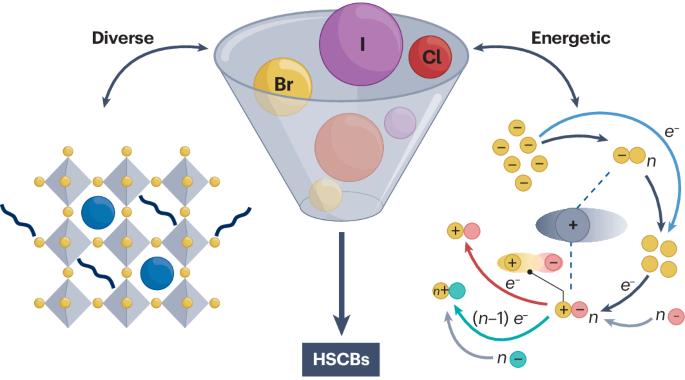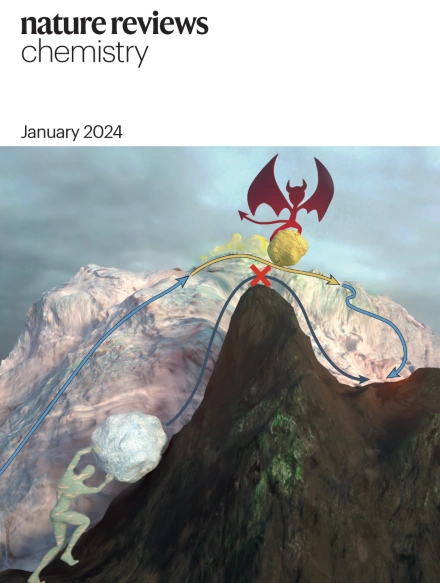卤素动力静态转换化学
IF 38.1
1区 化学
Q1 CHEMISTRY, MULTIDISCIPLINARY
引用次数: 0
摘要
卤素动力静态转换电池(HSCB)在储能应用领域蓬勃发展。它们属于二次非流动电池,通过可逆地改变电极或/和电解质中卤素的化合价来转移电子,从而使其有别于传统的摇椅电池。为此开发的活性卤化物化学物质包括有机卤化物、卤化物盐、卤代无机物、有机-无机卤化物以及最广泛研究的卤素元素。除此之外,人们还发现了基于多电子转移和有效反应途径的各种氧化还原机制,从而提高了 HSCBs 的电化学性能和稳定性。在本综述中,我们将讨论 HSCB 的现状及其电化学机理-性能相关性。我们首先详细阐述了 HSCBs 所涉及的基本氧化还原机制、热力学、转化和催化化学以及质量或电子转移模式。最后,我们展望了高能卤素阴极在储能设备中的实际应用所面临的挑战和机遇。本文章由计算机程序翻译,如有差异,请以英文原文为准。


Halogen-powered static conversion chemistry
Halogen-powered static conversion batteries (HSCBs) thrive in energy storage applications. They fall into the category of secondary non-flow batteries and operate by reversibly changing the chemical valence of halogens in the electrodes or/and electrolytes to transfer electrons, distinguishing them from the classic rocking-chair batteries. The active halide chemicals developed for these purposes include organic halides, halide salts, halogenated inorganics, organic–inorganic halides and the most widely studied elemental halogens. Aside from this, various redox mechanisms have been discovered based on multi-electron transfer and effective reaction pathways, contributing to improved electrochemical performances and stabilities of HSCBs. In this Review, we discuss the status of HSCBs and their electrochemical mechanism–performance correlations. We first provide a detailed exposition of the fundamental redox mechanisms, thermodynamics, conversion and catalysis chemistry, and mass or electron transfer modes involved in HSCBs. We conclude with a perspective on the challenges faced by the community and opportunities towards practical applications of high-energy halogen cathodes in energy-storage devices. Substantial progress in halide chemicals and redox mechanisms has spawned a boom in halogen-powered static conversion batteries. This Review tracks the natural benefits and intricate redox behaviour of halogen conversion chemistry, highlighting its pivotal role in electrochemical energy storage.
求助全文
通过发布文献求助,成功后即可免费获取论文全文。
去求助
来源期刊

Nature reviews. Chemistry
Chemical Engineering-General Chemical Engineering
CiteScore
52.80
自引率
0.80%
发文量
88
期刊介绍:
Nature Reviews Chemistry is an online-only journal that publishes Reviews, Perspectives, and Comments on various disciplines within chemistry. The Reviews aim to offer balanced and objective analyses of selected topics, providing clear descriptions of relevant scientific literature. The content is designed to be accessible to recent graduates in any chemistry-related discipline while also offering insights for principal investigators and industry-based research scientists. Additionally, Reviews should provide the authors' perspectives on future directions and opinions regarding the major challenges faced by researchers in the field.
 求助内容:
求助内容: 应助结果提醒方式:
应助结果提醒方式:


